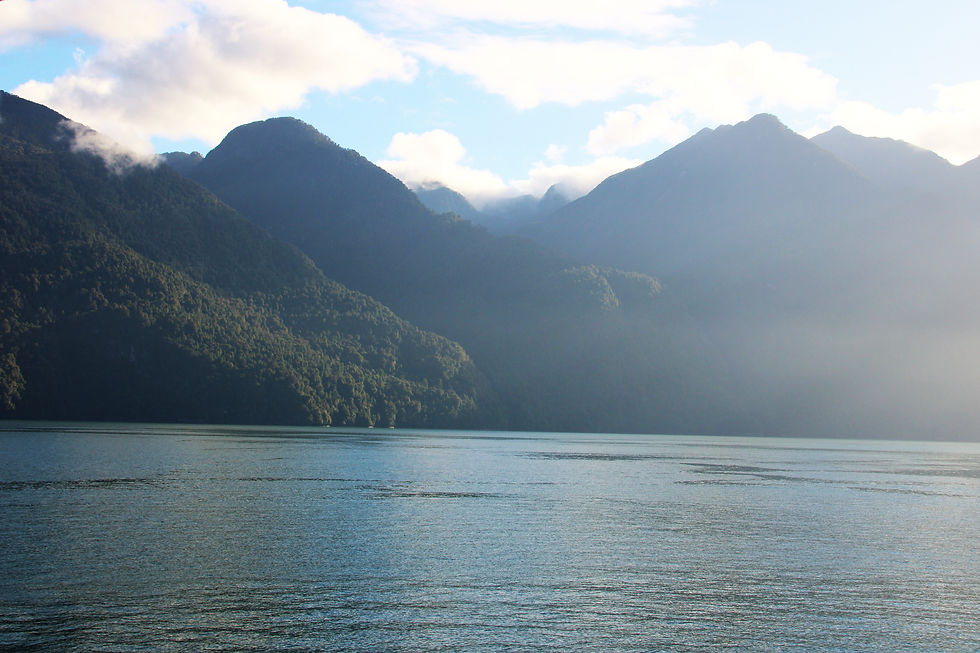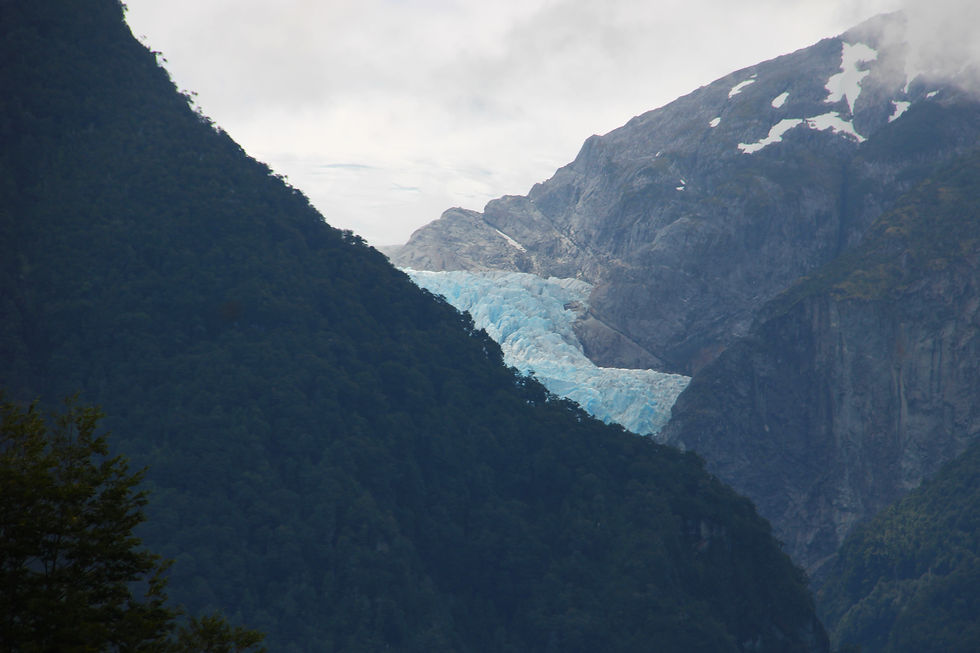Let’s start with a bit of history. Chilean Patagonia was inhabited only by local indigenous people until the early 1900s. In 1935, Chile gave carte blanche to a Valparaiso based company to exploit the area by clearing the timber and utilizing its natural resources. The indigenous population was either relocated or forced to integrate. It wasn’t until 60 years ago that the first settlement was established.
Chile continued to exploit the area, until an American, Doug Thompkins, founder of Patagonia clothing and avid lover of this place, while despised by many who sought to enrich themselves, began efforts to convince the government that Patagonia should remain free of exploitation, eventually succeeding. He established Pumalin National Park, and reintroduced native fauna, including the puma. Today the park is named Pumalin Doug Thompson. Since then, dozens of new National Parks have been established, and this place is a veritable nature-lover paradise.

Truth be told, there really isn’t much to do that is not somehow related to outdoor life. Photographers, hikers, rock climbers, rafters and kayakers, and serious bikers meet their challenge here. Ruta 7, better known as the Carretera Austral (Southern Road), meanders for 1,350 kilometers before dead-ending. For those wanting to travel further south and reach Tierra del Fuego, the only way to do so is by ship or plane.
Ruta 7 is the destination. The goal of those who travel here is simply that of driving the Carretera Austral. Why? Because it is spectacular from beginning to end. Every curve reveals new amazing vistas, rivers, lakes, fjords, the ocean, rock formations, glaciers, waterfalls, etc. And everywhere along its way there are 360 degrees of marvels.

You may be tired of seeing photos of mountains (by the way, my photos do the place terrible injustice) but being here you’d never tire of them. Never in all our travels have we seen so many awe-inspiring, never-ending views.
Now, let us catch you up with our trip. The room we rented in Ayacura for the six hours between ferries was a fine place. We were up at 6AM and by 6:30 we were in line for the ferry. We had no problem securing a passage. By 9:15 we docked at Calata Gonzalo, a landing with no town, but with a wealth of majestic peaks incredibly thick with vegetation.





The unpaved road went on for miles, but eventually turned to asphalt and stayed that way until we reached the town of Chaiten, where we had lunch and enjoyed a long walk on the beach.





From there we continued on the Carretera, alternating segments of gravel to paved parts, occasionally driving by tiny hamlets.






It wasn’t until dinner time that we reached Puyuhuapi, a town at the end of a long fjord, and secured a new cabaña for the night. Along the way we picked up a couple of young girls from Germany who were hitchhiking. They were most pleasant and grateful, and told us we were their heroes.





Today, we left Puyuhuapi and continued our southern trek. We had intended to visit the hanging Queulat Glacier, but once again, we were stopped at the entrance to the park, as it had reached maximum capacity. The high elevation glacier is called “hanging” because it ends dramatically on a cliff. We could only take a picture from far away, but all you can see is ice with no drama.

Again, the road itself is the spectacle. We picked up another couple of hitchhikers, this time from Chile, and traded travel stories, while stopping for many photos along the way.









At the moment we are spending the night in the town of Port Aysen. It’s quite chilly here, in the 50s. The place has the feel of Alaska, but in the southern hemisphere. We’ll have more to say in a day or two. Thank you for tagging along.
Really enjoyed these photos, such beauty.